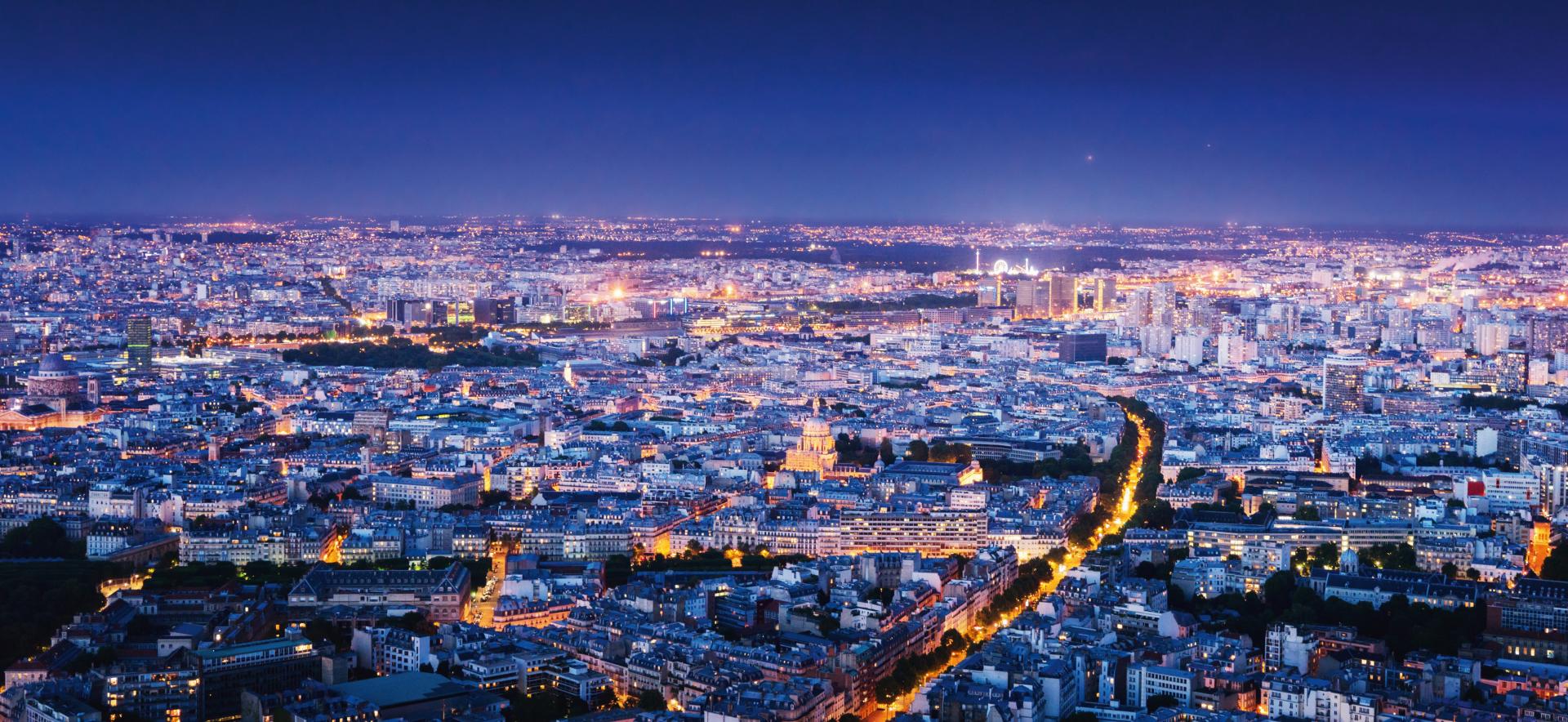
A METROPOLIS AT THE SERVICE OF 7.2 MILLION RESIDENTS
Since its creation, the Greater Paris Metropolis has taken concrete steps to benefi t its 7.2 million residents. The particular role of the Metropolis has become undeniable, as it takes up the challenges of economic, social and cultural development, working to protect the environment and enhancing its international attractiveness. Its action is focused on employment, investment and innovation.
The Greater Paris Metropolis was created on 1 January 2016 by the Law of 27 January 2014 on the Modernisation of Territorial Public Action and the Affirmation of Metropolitan Areas (Maptam Law), completed by the Law of 7 August 2015 on the New Territorial Organisation of the Republic (NOTRe Law).
Greater Paris Metropolis is an intermunicipal authority composed of 130 municipalities and 11 territories. It includes Paris, the 122 municipalities in the three departments of Hauts-de-Seine, Seine-Saint-Denis and Val-de-Marne, and seven municipalities in the neighbouring departments of Essonne and Val-d’Oise, representing nearly 7.2 million residents in total.
Working to restore balance between territories and improve living environments for metropolitan residents.
As a public body of intermunicipal cooperation with its own taxation revenue and specific status, the Greater Paris Metropolis exercises powers in five mandatory areas, as defined in the metropolitan program:
- Economic, social and cultural development and planning;
- Environmental protection and enhancement and living environment policy;
- Development of the metropolitan space;
- Local housing policy;
- Management of aquatic environments and flood prevention.
L'essor de la Métropole
Initiatives by Greater Paris Metropolis aim to improve the living environment for residents, reduce inequalities between territories, and develop a sustainable social and economic urban model that ensures attractiveness and greater competitiveness for the benefit of the entire country.
Furthermore, Greater Paris Metropolis is a space for dialogue and strategic orientation for the 131 municipalities in the continuous dense urban zone. It provides a relevant level for action to contribute to restoring territorial balance.
Lastly, Greater Paris Metropolis is part of a local and global dynamic. At local level, dense and connected urban zones have specific demands in terms of housing, transport, environment and distribution of economic activity. Greater Paris Metropolis offers a clear response to all these issues.
At international level, the Metropolis contributes to global growth as Europe’s top employment hub with the largest stock of corporate office space. The challenges it faces relate to economic, social and cultural development and planning, environmental protection and attractiveness. These are challenges that have grown even more pressing with the pandemic and subsequent economic and social crises that the Metropolis has had to face since the beginning of 2020. Through its Metropolitan Recovery Plan, Greater Paris Metropolis has once again proven itself as a central economic operator in the metropolitan territory, through its initiatives in the areas of employment, investment and innovation.
